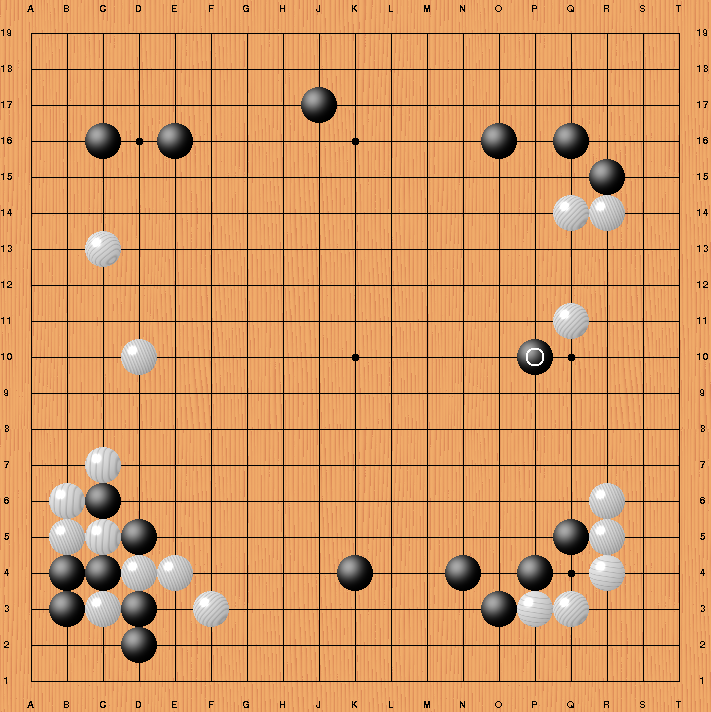In Game Two of AlphaGo versus Lee Sedol in March 2016, the machine made a move no human would ever think of doing. “Move 37” was unimaginable in the more than three thousand year history of the game. By taking position on the “fifth line” AlphaGo pushed the boundaries of human intuition. In Game Four Lee Sedol reciprocated with a human moment of transcendence, “Move 78”. These two moves have now entered the corpus that students of Go will study forevermore. But the moves did not just change the world of Go; they are pointers to how the world is about to change because of Artificial Intelligence, or to be more specific because of General Artificial Intelligence.

Move 37 by AlphaGo in Game Two (in black)
Machines capable of improving their performance by extracting facts from data are opening the path towards this future. The excitement created by natural language processing and image recognition encourages investment, as well as human talent, to focus on developing machine learning further. We are just at the beginning. Artificial Intelligence is still confined within the narrow space it is applied each time. But researchers at DeepMind and elsewhere are becoming aware of what needs to happen next. In order for machines to achieve human-like intelligence we need to solve for three major problems: self-learning, transfer learning and common sense.
Self-learning means a machine capable of learning by itself, i.e. without the need for a human in the loop. Deep reinforcement learning, the technique used in AlphaGo, is an example how this could happen. Given a goal the machine can explore strategies to achieving this goal by playing against instances of itself. For transfer learning to happen there needs to be some kind of generality in the system together with a mechanism for generalization. Generality has been partly solved: deep learning networks are “general-purpose”, in the sense that knowledge is not pre-codified, as was the case in expert systems and other logic-based, symbolic approaches to AI. They can acquire knowledge by themselves. But a mechanism for generalisation of the acquired knowledge is still some way away. Indeed this mechanism, when discovered, is likely to solve for common sense too. But how such mechanism could look like?
The architecture of the human brain might be a good place to look for a solution. Perhaps the key to generalization and common sense lies in how our memory works. Here the role of hippocampus seems to be crucial. It acts as a central “dot-joiner” between new sensory inputs and stored memories. “Common sense” can be regarded as an outcome, or by-product, of contextualising and relating new experiences with the dynamic space of past memories. Creating a similar hippocampus-like architecture in a machine may therefore solve for the problems of both transfer learning and common sense. But to do so, the machine must be grounded in a world of sensory, and motor, reality. In other words, the machine must possess some kind of body too; not necessarily a robot body, but some kind of real time connection to the material-physical world. General Artificial Intelligence may not be too far away after all. The more connected the disciplines of neuroscience and artificial intelligence become, the faster we will get there. But once we do then what?
Sedol’s Move 78 was described as “God’s touch”. Perhaps it is worth reflecting on this for a while. The game of Go, because of its complexity and open-endness, is viewed in the East as a way for humans to connect with the universe, the cosmos, the infinite, or the divine. This connection occurs via instances of intuition, or by “knowing without knowing how you know”. Arguably, AlphaGo, with its Move 37, triggered Sedol’s human Move 78. In other words, the human-machine interaction during the game enabled - or liberated - the human to become more intuitive, and to discover a part of reality that was hitherto unknown. The transcendent experience of Sedol’s Move 78 may be a harbinger of our future relation with human-like intelligent machines. They will allow us to explore and discover new areas of intelligence, and thus expand our intelligence too. For centuries people suspected that there was an intelligence greater than humans; and often called this intelligence “god”. Our greatest discoveries, the ones that allowed us to progress and solve problems such as disease and poverty, were made when we managed to break the boundaries of our own intelligence and touch the “devine”. The intelligent machines of the future will become our vehicles, and partners, in pushing those boundaries even further, much further, more often; and by many more.
